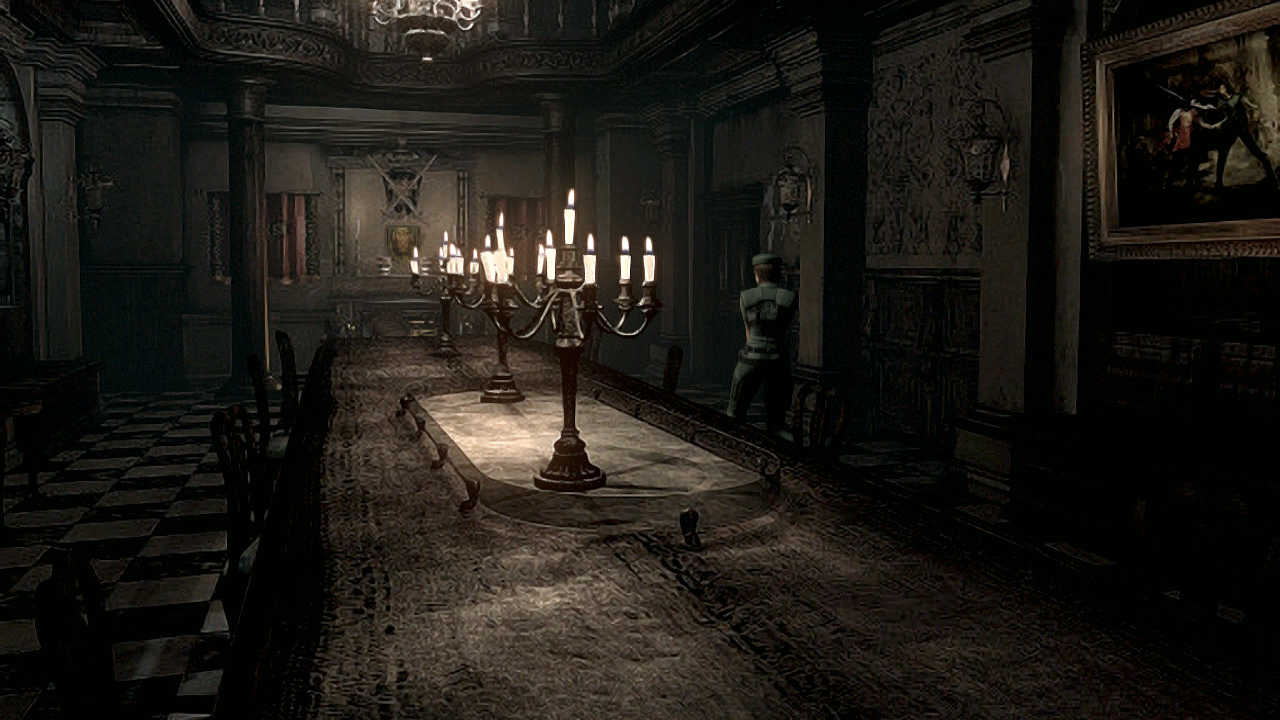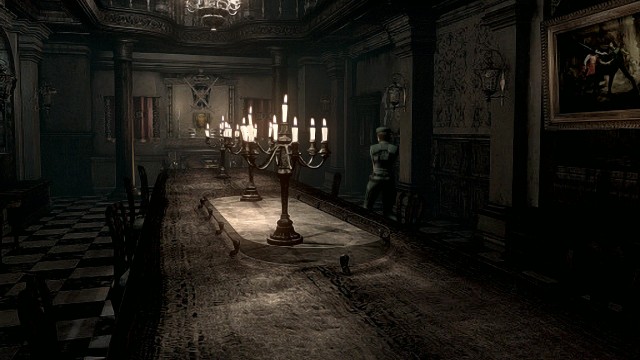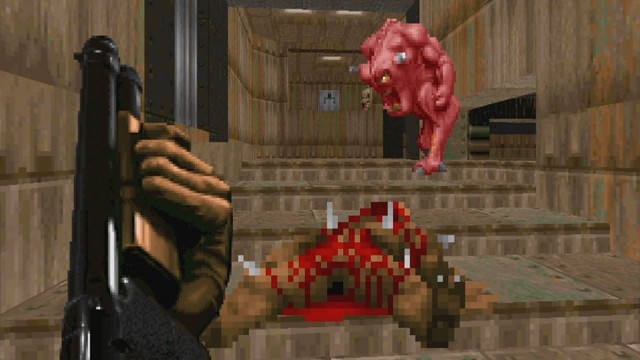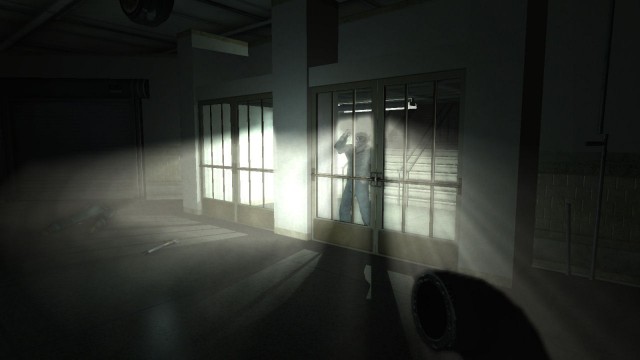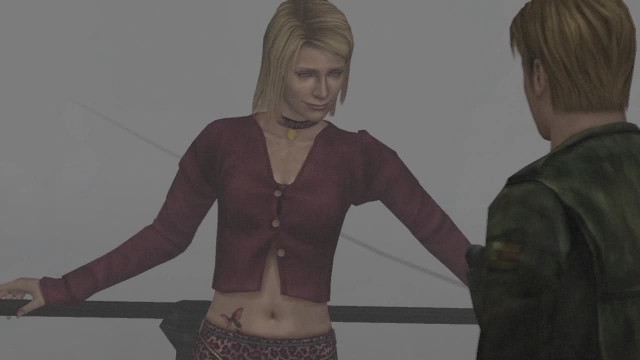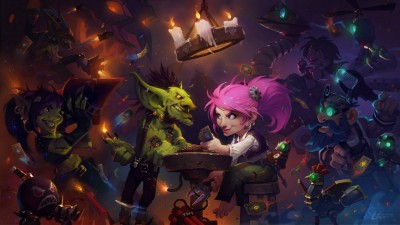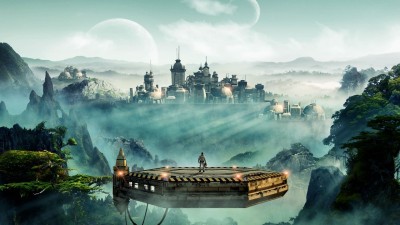The Horror genre is an area well-explored in gaming. Resident Evil - released on PS One back in 1996 - may get most of the credit these days for popularising the idea of deliberately subjecting ourselves to terrifying video game experiences, but it’s credit it doesn’t quite deserve.
In reality, horror games have existed almost since the first time the entertainment industry began to explore the possibilities of converting lines of computer code into compelling interactive joyrides. While early attempts like 1982’s adaptation of The Texas Chainsaw Massacre on the Atari 2600 seem laughably primitive now, it’s easy to forget that they were once considered cutting edge.
Not all Horror games lose their power over the years, however. Here’s our pick of 5 classic Horror games which remain just as scary now as they did at the time of their original release. They may not always have set cash registers screaming - but they’ve lost none of of their ability to disturb.
5. Resident Evil (REmake)
Year: 2002
Horror maestro Shinji Mikami’s 1996 original may have been the game that kicked off players’ fascination with video game horror, and Resident Evil 4 may be that gets most of the attention from the series’ more modern era; but the 2002 Gamecube-exclusive remake is what many fans regard as the franchise’s crowning glory.
REmake (as it often known) took everything players loved about the series’ debut title and preserved it - while adding in a few concessions to more modern gameplay expectations and transplanting everything into what still remains the most atmospheric, detailed and beautiful example of pre-rendered backgrounds ever seen in a video game. Previously static backdrops were brought to life through the use of subtle animations and lighting effects, character models were recreated from scratch using modern technology, and audio was re-recorded to take advantage of the improved technology inside Nintendo’s little cube.
Attention to detail is what made REmake so special. Perhaps aware that after 6 years players would have become too familiar with all the set-pieces and scripted scares that wowed them back in 1996, Mikami mixed things up - switching the order of some sequences, while ramping up the threat level with the addition of the ultra-deadly Crimson Head zombie variant. Fail to kill a zombie by either destroying the head or setting it on fire, and after a time it would come back to life as a far more lethal version of its previous self. Crimson Heads did more damage, could decapitate you if they got too close, and took a serious amount of firepower before they’d finally hit the floor for good.
A few new enemy types were added as well, such as T-virus infected sharks and an early version of a creature later seen in Resident Evil 4 (which was in development around the same time). Last but not least, the playable space was expanded, with many new areas and secrets for players to uncover - implemented in a way that made them feel as though they had always been there, rather than having been bolted on for the sake of it.
Resident Evil had already terrified gamers upon its release in the mid-1990s, but REmake made even the most experienced veteran experience that fear all over again. It remains Shinji Mikami’s best contribution to the genre he helped shape (yes, even more so than Resident Evil 4, which induced panic more than creeping dread) - so it’s perhaps no big surprise that REmake is getting the HD treatment, due to hit consoles and PC sometime in early 2015.
4. Doom
Developed by: iD Software
Year: 1993
What more needs to be said about Doom that hasn’t already been said?
How about the fact that over two decades on, it still manages to cram more atmosphere and suspense into its low-resolution pixelated enemies and jaggy, early-90s pseudo-3D halls than most games released in the years since? Doom is a classic for a reason. It might not have defined the modern FPS template - that accolade goes to Wolfenstein 3D, released a year earlier - but iD’s blend of sci-fi and demonic horror revolutionized the industry, setting in motion years of mainstream media warnings about “killer video games”.
Looking at screenshots today, younger players who weren’t around at the time and won’t have experienced first-hand the kind of palm-sweating, stress-inducing tension created by being confronted by a closed door and not knowing what what lay beyond, might baulk at the suggestion of Doom being frightening.
But for the rest of us? Those of us who stayed up, glued to our screens, our CRT monitors spilling forth their glow into the early hours of the night? We knew. And we can never forget.
Even in later levels when you had access to the game’s full arsenal of bad-ass weaponry, iD didn’t allow you to become over-confident - making ammo more scarce and forcing you to approach each corner with caution, instead of flinging yourself into the fray at every opportunity. iD was at the top of their game back in 1993, which is why Doom is still being written about on a daily basis, and why Rage is regarded as mere blip on the video game history timeline.
Doom‘s best level? E2M6, otherwise known as Halls of the Damned. Featuring great level design with the perfect balance between open areas and closed corridors, and enemy placement designed to surprise you, nothing else comes close.
Bring it on.
3. Condemned: Criminal Origins
Developed by: Monolith Productions
Year: 2005
Condemned: Criminal Origins was widely overlooked upon its initial release, and that’s a shame. Monolith took the horror genre and distilled into a first-person test of endurance, replacing traditional genre enemies like zombies, demons and the supernatural with a much more believable threat - hobos running at you with bits of rusted pipe.
Pipes, bits of wood, crowbars, and iron rebars are the name of the game in Condemned. Firearms are present, but unlike other horror games, they’re a rare commodity, and you don’t get to keep them. Nope, in Condemned, dispatching your assailants means getting up close and personal with their face.
Throughout the experience, you constantly need to adapt to darkness. Rarely do you have the luxury of finding yourself in a well-lit area; more often, you’re surrounded by murk and shadow, forced to keep an ear open at all times. Was that another bit of rotting architecture creaking, or was it a potential enemy? Chances are, you won’t know until it’s too late.
Condemned was largely overlooked upon release, and that’s a crying shame. Matters weren’t helped by a sequel which took the subtle ambiguity of the original and threw it out the window, resulting in a game that was little more than nonsensical tropes stitched together for no logical reason. Condemned: Criminal Origins remains an overlooked gem, though. Thick with atmosphere and dread, relishing every opportunity to keep the player on their toes, Monolith made a mark on the horror genre which deserves to be experienced by any self-respecting Horror fan.
What Condemned failed to do when it comes to engendering sympathy for the homeless, it succeeded when it comes to crafting a world so filled with dirt, grime and decay that the act of playing it leaves you wanting to take a shower.
2. Silent Hill 2
Developed by: Team Silent
Year: 2001
If you don’t understand why Silent Hill 2 is on this list, then either you’ve wandered in from some remote corner of the internet, are too young to be remember the impact it had upon its initial release, or simply don’t understand the appeal of Horror games as a genre - in which case, why are you reading this?
Instead of using the additional power afforded by the PlayStation 2 (the first game came out on PS One back in 1999), developer Team Silent instead wisely chose to use what had once been the result of hardware limitations to their advantage. In Silent Hill, the town was enveloped in fog because Sony’s first PlayStation console wasn’t powerful to handle rendering detailed, open 3D environments. In Silent Hill 2, the fog isn’t there because it has to be; it’s there because monsters are a whole lot scarier when you can’t see them coming.
The first game had currents of psychological horror running through the story, but was more interested in traditional genre themes like the occult and demonic monsters. While those themes are still present in the sequel, in Silent Hill 2 the balance between the psychological and the supernatural underwent a drastic shift, and the result was that protagonist James Sunderland wasn’t battling literal demons - he was battling his own, born from his neuroses and a deep-seated sense of guilt. If you don’t already know the ins and outs then saying any more would spoil it, but by placing an already-troubled character in a situation designed to test the very limits of his mental endurance, Team Silent created a game which stands as a watershed moment in video game horror. Players were forced to question what was real and what was not, the plot was spread with just enough vagueness to keep it compelling without feeling obtuse, and by the time you reached the end and the true explanation of everything you’d been through was revealed - provided you’d made the right decisions along the way, of course - you were left emotionally and mentally exhausted.
A twisted and distinctly Japanese flair for horror monsters also kept players engaged. There are no zombies or vampires or demons in Silent Hill 2 - at least not in the traditional sense. Instead you find yourself pitted against stitched-together mannuequins, grotesque distortions of hospital nurses, and a giant… thing with a metal pyramid for a head and a penchant for sexual violence.
A terrible HD “remaster” ruined most of what makes Silent Hill 2 so special, peeling back the fog, revealing cracks in the world and and stripping away much of the subtle lighting and particle effects that made the original so special. But if you can get hold of a copy now that isn’t sullied by that piss-poor excuse of a cash-grab, take it. Silent Hill, as a series, peaked early - but when you’ve already reached the top, the only to go is down.
1. Call of Cthulhu: Dark Corners of the Earth
Developed by: Headfirst Productions
Year: 2005
I bet you expected Silent Hill 2 or Amnesia to take the top spot, am I right?
As scary as those games are - and they are terrifying - the top spot on this list goes to Headfirst Productions’ little-known gem.
Taking the basis of its inspiration from Lovecraft’s 1936 novella The Shadow over Innsmouth, Headfirst Productions pulled in elements from across the Cthulhu Mythos to craft one of the most disturbing and authentic representations of the author’s universe ever created. From the lack of a heads-up display years before Dead Space was even a twinkle in its designers’ eye, to the use of sanity as a gameplay mechanic and an emphasis on avoiding looking at enemies, let alone engaging them in combat, Dark Corners of the Earth was a grim, unrelentingly disturbing experience from beginning to end.
The concept of sticking to the shadows and not even looking at your pursuers to check where they are feels old hat now in the wake of Amnesia, but if you want an idea of where Frictional got some of their inspiration, look no further.
While dated, the low-poly character models and environments only enhance the otherworldliness of stalking around Innsmouth trying to get to the bottom of the game’s central mystery. Even in places of safety the superb sound design refuses to let you accept that you’re out of danger. Throw in a typically Lovecraftian script of madness, alien beings so powerful and ancient that even attempting to comprehend their nature drives men insane, and some fantastic pacing - at least, for most of the game - and you start to understand why so many cite Dark Corners of the Earth as one of the most terrifying games ever made.
Sadly, despite player and critical acclaim the game suffered at retail, and a planned sequel was cancelled very early into development. But while few had the chance to experience Headfirst’s masterpiece at the time of its original release, Dark Corners of the Earth has since gone on to influence a large number of horror games. In recent years, a re-release on Steam has meant that a whole new generation of players are able to experience its slimy embrace.
If you can play one classic Horror game before now and Christmas, make it this one. You might regret it - but only because of the relentlessly trauma-inducing terror, not because of quality concerns.
